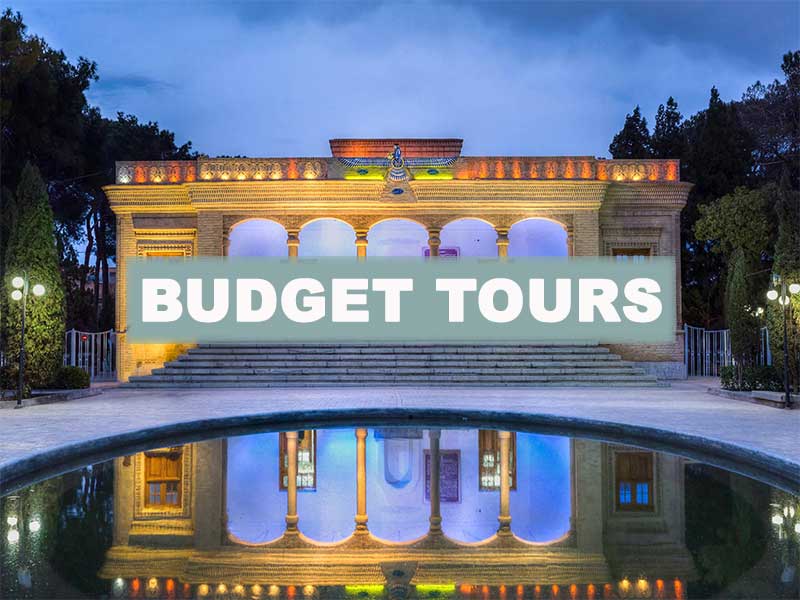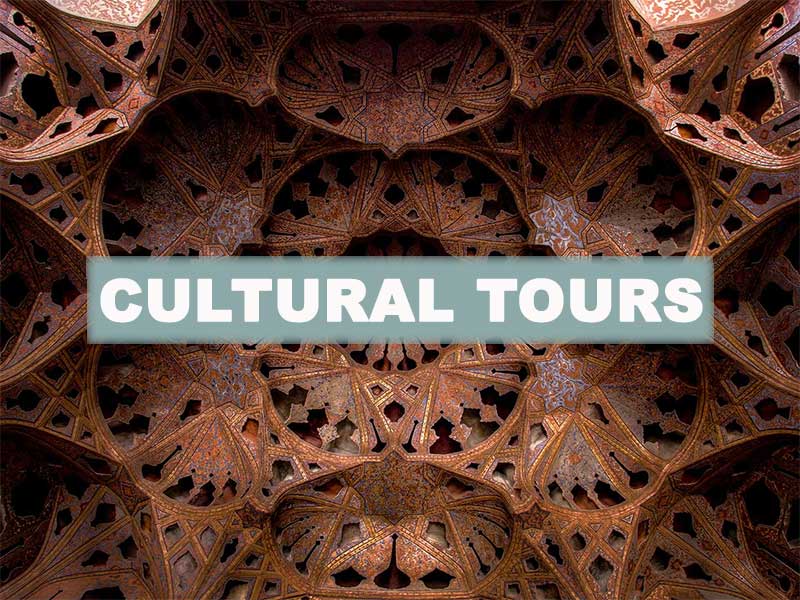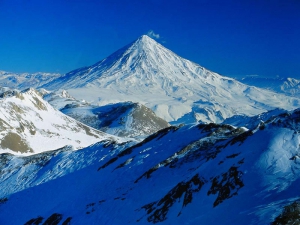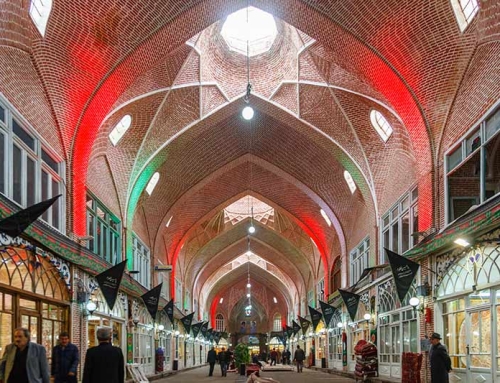Isfahan Jameh Mosque, What is Unique About?
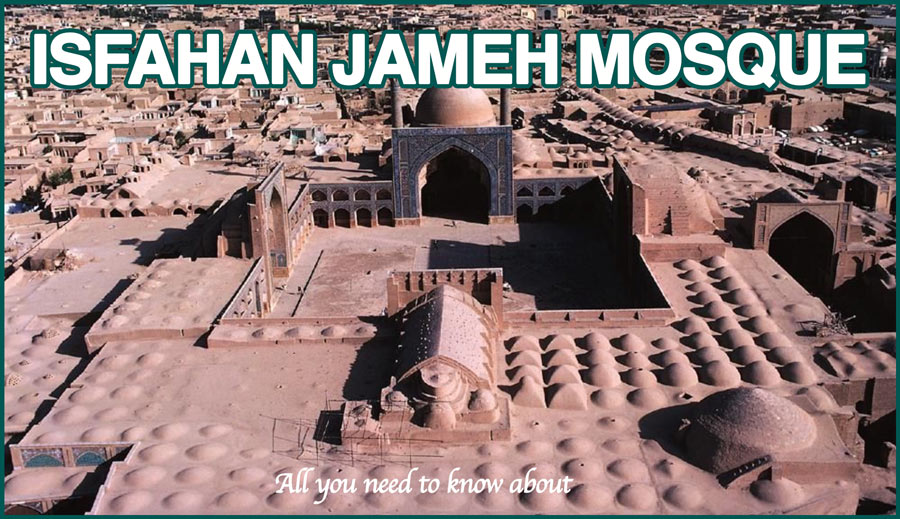
Isfahan Jameh Mosque (Masjed-e Jameh or the Grand Mosque) located in the central city of Isfahan has been the grand religious congregation center. You can’t believe this mosque as one of the oldest and undoubtedly the largest mosques in Iran is standing for more than one millennium. Century after century this mosque witnessed the changes and was affected by the evolution of the Iranian architecture. This ancient Islamic masterpiece is a representative of Iranian Islamic architecture evolution through time. Its remarkable decorative stucco mirrors, tile-work and other elegant geometric details date back mostly to the Seljuk, Mongol, and Safavid eras.
Let us tell you more about how precious this mosque is and how it developed through the history. You will read:
- Isfahan Jameh Mosque Facts
- What is special about the Jameh Mosque of Isfahan convincing us to visit?
- When was the Great Mosque of Isfahan built?
- Jameh Mosque of Isfahan is registered as a UNESCO monument
- When is Jameh Mosque of Isfahan open?
- What hotels are near Isfahan Jameh Mosque?
- What restaurants are near Isfahan Jameh Mosque?
- How to visit Isfahan Jameh Mosque?
Isfahan Jameh Mosque Facts:
- Construction date: Started about 770 AC
- Historical period: Sassanids
- Type of attraction: Mosque
- Entrance fee for non-Iranians: 500,000 Rials
- Opening hour: 09:00 to 19:00
- Phone: 03114456400
- Address of Isfahan Grand Mosque: Allameh Majlisi Street – Qiam Square – Isfahan
What is special about the Jameh Mosque of Isfahan convincing us to visit?
Long History: The first reason that makes Jameh mosque of Isfahan spectacular is its history. This mosque is considered not less than a gallery of Islamic architecture evolution within the several centuries from construction to the current time. This mosque, while still standing, has been burned, rebuilt and remodeled many times, therefore it contains several parts that each represent a different history of Iran.
Unique Architecture: The architecture of the mosque has unique features that distinguishes it from other mosques in Iran. Unlike other mosques, the Jameh mosque of Isfahan has four “iwans” (monumental domed portico) facing two by two in a courtyard. Its main reputation comes from this feature. These porticos transformed the mosque’s architecture from Arabic to Iranian style. This style was originally practiced in building palaces during the Sassanid-era, a type that later became prevalent in Iran and the rest of the Islamic world.
16-sided Dome: The dome was successfully claiming its place as one of the masterpieces of the Persian architecture for its structural clarity and geometric balance. Instead of a quadrangular dome this mosque has a 16-sided dome. This feature has inspired the construction of other mosques in Tabriz, Shiraz and Samarkand with four porticos and 16-sided domes.
Spectacular Details: Another feature that makes the mosque spectacular is its entrance. We sometimes have to raise our heads and look at the arches and the decorations on the roof, and we are thrilled by the creativity of its architects.
Social Role: Another feature about this mosque not to miss visiting is its influence on the formation of the core of Isfahan. When the Jameh Mosque was constructed, it became known as the first square of the city, markets were created around it, and over time, neighborhoods and public buildings and passages formed the main city.
Elaborated Stucco Mihrab: Notable is the elaborate sculpted stucco mihrab commissioned in 1310 by the Mongol ruler Oljaytu, which is located in an adjacent prayer hall built within the western arcade. The Safavid intervention was largely decorative, with the addition of muqarnas, glazed tiles, and minarets flanking the southern iwan.
Also read: 7 Top Tips on Visiting Iran
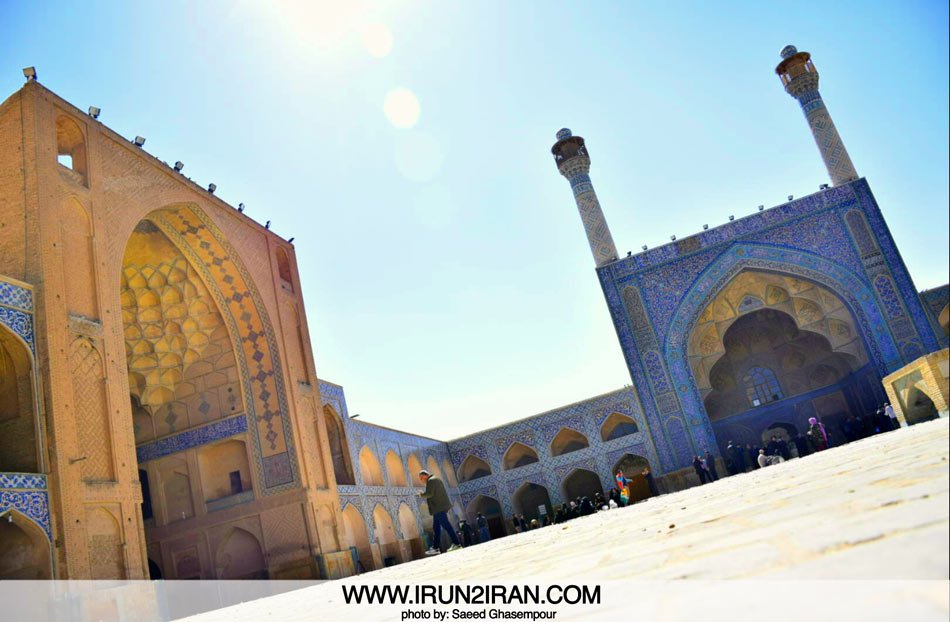
When was the Great Mosque of Isfahan built?
The origin of this mosque goes back to the 8th century, but it burned down and was reconstructed in the 11th century during the Seljuk dynasty. This mosque underwent renovation many times. As a result, it has parts built in different architectural styles, making the mosque now a condensed history of Iranian architecture.
The domes and pillars that make up the hypostyle area among the iwanes (portico) are of uncertain date and varied in style, unfinished modifications with repairs, reconstructions and extensions. Responding to the new functional needs of the space, political ambition, religious events and changes in taste, further additions and modifications made incorporating elements from the Mongols, Muzzafarids, Timurids and Safavids dynasties.
Jameh Mosque of Isfahan is registered as a UNESCO monument
After many years of waiting, on June 30, 2012, the Jameh Mosque of Isfahan was finally registered as a World Heritage Site by UNESCO to become the second listed World Heritage Site in Iran.
UNESCO proclaims that the double-shelled ribbed domes of the mosque represent an architectural innovation that has been inspired designers throughout the region.
Placed on the UNESCO World Heritage list, the mosque is still functional as a busy place of worship in the historical zone of the city in Naqsh-e Jahan (Royal) Square. Jameh mosque covers over 20,000 square meters.
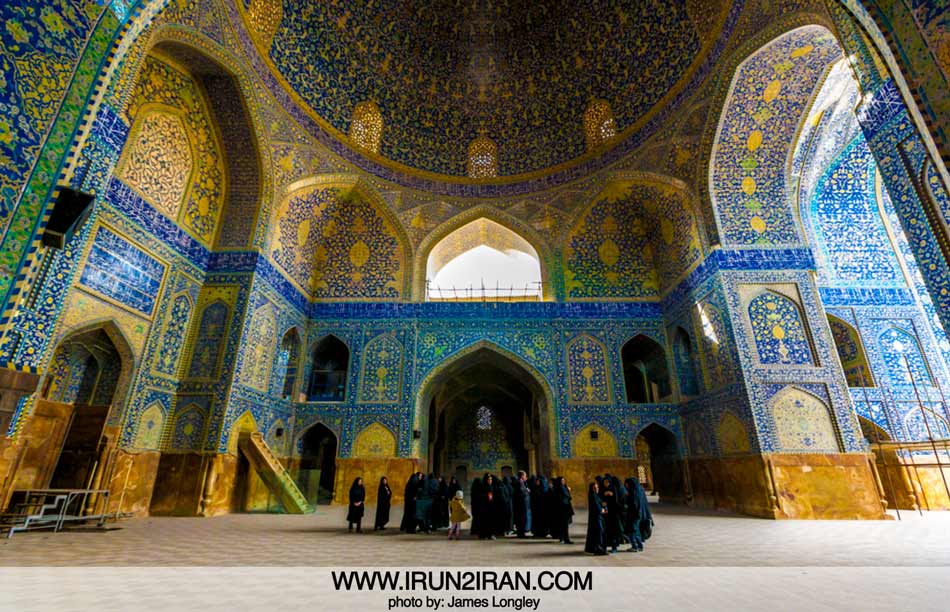
When is Jameh Mosque of Isfahan open?
- Sun – Sat 9:00 AM – 12:00 PM
- Sun – Sat 14:00 PM – 19:00 PM
What hotels are near Jameh Mosque of Isfahan?
- (0.09 mi) Iravani’s Historic House
- (0.13 mi) Howzak House (Boutique Hostel)
- (0.09 mi) Isfahan boutique hotel
- (0.12 mi) Qajar House
- (0.22 mi) Atigh Traditional Hotel
What restaurants are near Jameh Mosque of Isfahan?
- (0.89 mi) Roozegar
- (0.79 mi) Azadegan Cafe
- (0.80 mi) Café Narvan
- (0.80 mi) Peace coffee&tea
- (0.94 mi) Messo Qali Cafe

Jameh Mosque is one of the most prominent places to visit in Isfahan, mainly for those who are interested in history and religion. Thanks to our Iran World Heritage Tour package, you can visit all the tourist attractions of Isfahan including Jameh mosque.




